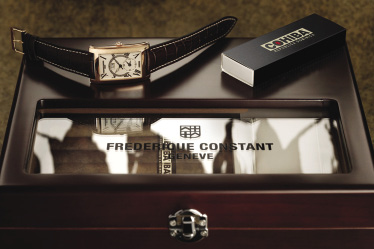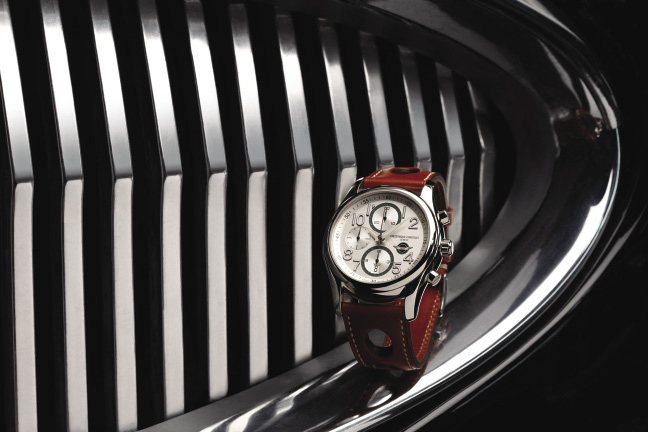- Home
- Media Kit
- Current Issue
- Past Issues
- Ad Specs-Submission
- Ad Print Settings
- Reprints (PDF)
- Photo Specifications (PDF)
- Contact Us

![]()
ONLINE

Strictly Classical
Editors’ Note
In 1988, Peter Stas created his own company with the goal of making affordable mechanical wristwatches. To support that dream, in 1989, he started working for Philips in Eindhoven, The Netherlands, and in 1991, departed for a six-year tour of duty in Hong Kong. There, he met Philippe Bouchet, who managed a watch parts company in Geneva and who would later become Stas’s partner. Stas hand assembled two six-quartz wristwatch models with ‘Frédérique Constant’ enameled on their dials and christened them as“The 18th-Century Collection”. Frédérique Constant’s first automatic mechanical wristwatch arrived in 1992. In 1997, Stas established an office in Carouge, on the outskirts of Geneva. Stas studied at Erasmus University in Rotterdam and obtained a Doctorandus degree in business economics.
Company Brief
Frédérique Constant (www.frederique-constant.com) is an independent family-owned watch manufacturer based in Plan-les-Ouates, Geneva. The company is involved in all stages of watch production, from initial design to final assembly and quality control. Each watch is assembled by hand and extensively controlled with the latest equipment to ensure maximum quality.
How did the recession impact the luxury segment and how has your firm fared during these times?
In 2008, we grew 16 percent; however, at year’s end, we felt the pressure – that continued into the beginning of 2009. For the second quarter of 2009, we were stable again but we were not able to recover from that first quarter, so 2009 overall was down 12 percent. And comparables for the industry for 2009 was something like minus 27 percent.
We grew 45 percent in 2010, and in 2011, we were up about 20 percent.

Frédérique Constant’s Cohiba
limited edition watch set
Where is that growth coming from?
From everywhere. During the crisis, high-end retailers started to take in Frédérique Constant because they saw our products were selling out while some of the other more expensive pieces were no longer selling out. This was spread via word-of-mouth in the industry so we could enter into better outlets than before and that helped push the growth.
Is this more of a high-end niche brand or is your profile broader?
We call ourselves accessible luxury. We have all the attributes of a luxury brand in the detail finishing of the dial, the polishing of the cases, the positioning in how it’s displayed in the shops, as well as the brochures and the image around the events we organize. However, most of our watches are between $2,000 and $3,000 so that makes us more accessible than a lot of our colleague brands that are priced between $5,000 and $20,000. That is where the difference became apparent during the crisis – people returned to genuine values. People have also returned to classical designs and we are strictly classical. We were ideally positioned because we have doubled the size of our company over the past two years.
As you launch new pieces, is it important they maintain some of that history and tradition?
Our watches are recognizable – many have roman numerals and rounded cases that denote Swiss/French design. Every year, when we introduce novelties, they are always an evolution of what we’ve been doing. So it fulfills the collection that we have but adds novelties that were not in the collection previously so the sales people have something new to show the retailers.

Frédérique Constant’s Healey Chrono
What geographical regions do you anticipate will provide the most growth?
Two years ago, we had just started our own subsidiary in the U.S. because one of the previous two distributors went bankrupt and the other closed. So we made the conscious decision to do it the right way, because we had never done it well in the U.S. The U.S. now accounts for 8 percent of our sales, which is only half the industry average, so we have a long way to go and, therefore, a lot of opportunity.
Asia, the Middle East, and Europe have been stable overall. Some countries have done especially well because there are a lot of Chinese tourists in Europe today, especially in Switzerland, where we’ve seen two consecutive years of very strong growth.
How does the market break down from a gender perspective?
We used to have only 5 to 10 percent in ladies watches, until seven years ago when we introduced our first ladies’ automatic collection. Since then, we have been able to increase the percentage of women every year about 5 percent. Today, we’re around 35 percent ladies and 65 percent gents.
How critical is it for you to have a culture of innovation?
We have always tried to find new designs, technologies, and movements, and in 2001, we started to develop our own first base caliber. At the time, that was unheard of for a company our size. We created it with the watchmaker’s school in Geneva, as well as the one in Holland. Eery year, we have been introducing a new caliber, which has enabled us to remain more independent.
We are in the middle of the development for the introduction of an interesting new world timer in 2012 and we recently patented two new technologies for producing mechanical watch calibers.
How important is customer service in the overall concept of the brand?
Our philosophy is to be a friendly alternative to the large groups. We are an independent, family-owned company and we believe we should treat everybody in a friendly manner.
We have huge investments in after-sales service, both in Geneva and in our worldwide service network. We have a provision system that is fully Internet controlled. Any service center around the world can order a part that is immediately dispatched from Geneva. There is advice on how to repair watches if they want to fix it locally, and if not, there is a full tracking system for watches shipped to Geneva that allows them to keep an eye on what is happening with the watch so, when the customer calls, they can log in and see instantly the status of that repair.
In leading this brand, how critical is being engaged in the community?
We have become more involved with the International Children’s Heart Foundation and the Paint a Smile Foundation. We also did a big campaign with Beijing Children’s Hospital, and in the U.S., we made a large donation to the American Heart Association.•